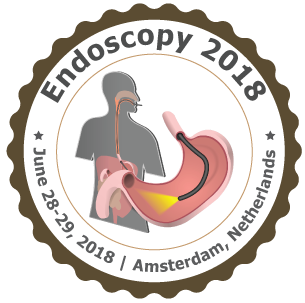12th International Conference on Abdominal Imaging and Endoscopy
Amsterdam, Netherlands

Emad Hamdy Gad
National Liver Institute, Menoufiya University, Egypt
Title: Surgical (Open and laparoscopic) management of large difficult CBD stones after different sessions of endoscopic failure
Biography
Biography: Emad Hamdy Gad
Abstract
Objectives: For complicated large difficult CBD stones that cannot be extracted by ERCP, patients can be managed safely by open or laparoscopic CBD exploration. The aim of this study was to assess these surgical procedures of CBDE after endoscopic failure.
Methods: We retrospectively reviewed and analyzed 85 patients underwent surgical management of large difficult CBD stones after ERCP failure, in the period from mid 2013 to mid 2018. The overall male/female ratio was 27/58.
Results: Sixty seven (78.8%) and 18(21.2%) of our patients underwent single and multiple ERCP sessions respectively with significant correlation between number of ERCP sessions and post ERCP complications (P=0.001). Impacted large stone was the most frequent cause of ERCP failure (60%). LCBDE and OCBDE were 29.4% (n=25) and 70.6% (n=60) respectively. Primary CBD repair, T-tube insertion, HJ and TDS were done in 45.9%, 40%, 8.3% and 5.9% respectively. The mean operative time and hospital stay were 185± 61.4 minutes and 4.9±2.07 days respectively. Eleven (12.9%) of our patients had post operative complications without mortality. By comparing LCBDE and OCBDE groups, patient age and hospital stay were significantly lower in laparoscopic group, while, T-tube insertion, choledocoscope use, operative time and post operative bile leak were significantly higher. Furthermore, patients underwent choledocoscope had significant direction to primary CBD repair and lower missed stones rate. While, on comparing T-tube with primary closure of CBD groups, there was significant lower operative time and hospital stay in the later.
Conclusion: Large difficult CBD stones can be managed either by open surgery or laparoscopically with acceptable comparable outcomes with no need for multiple ERCP sessions due to their related morbidities; furthermore, choledocoscope has a good impact on stone clearance rate with direction towards doing primary repair that is better than T-tube regarding operative time and hospital stay.

